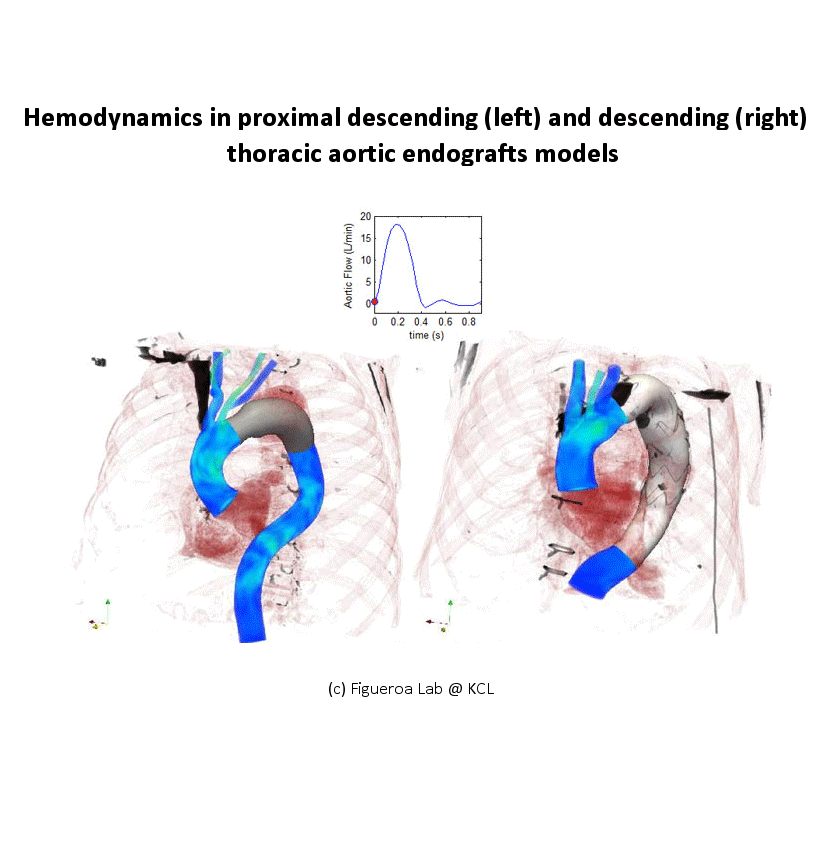The unique anatomical and biomechanical environment of the thoracic aorta (i.e., large motion, highly pulsatile flow) poses significant challenges to the long-term success of endografts. A deeper understanding of the forces experienced by endografts in vivo is required to improve their performance and long-term durability. The purpose of this investigation is to study the magnitude and direction of pulsatile displacement forces acting on realistic models of thoracic aortic endografts built from image data using computational fluid dynamics (CFD) techniques. We investigate the impact that different factors, such as device location, size, and elevated pressure, have on the forces experienced by the endograft.
References:
- “Computational Analysis of Stresses Acting on Inter-modular Junctions in Thoracic Aortic Endografts.” Journal of Endovascular Therapy Vol. 18, pp. 559-568
 .
. - “Magnitude and Direction of Pulsatile Displacement Forces Acting on Thoracic Aortic Endografts.” Journal of Endovascular Therapy Vol. 16, pp. 350-358
 .
.


